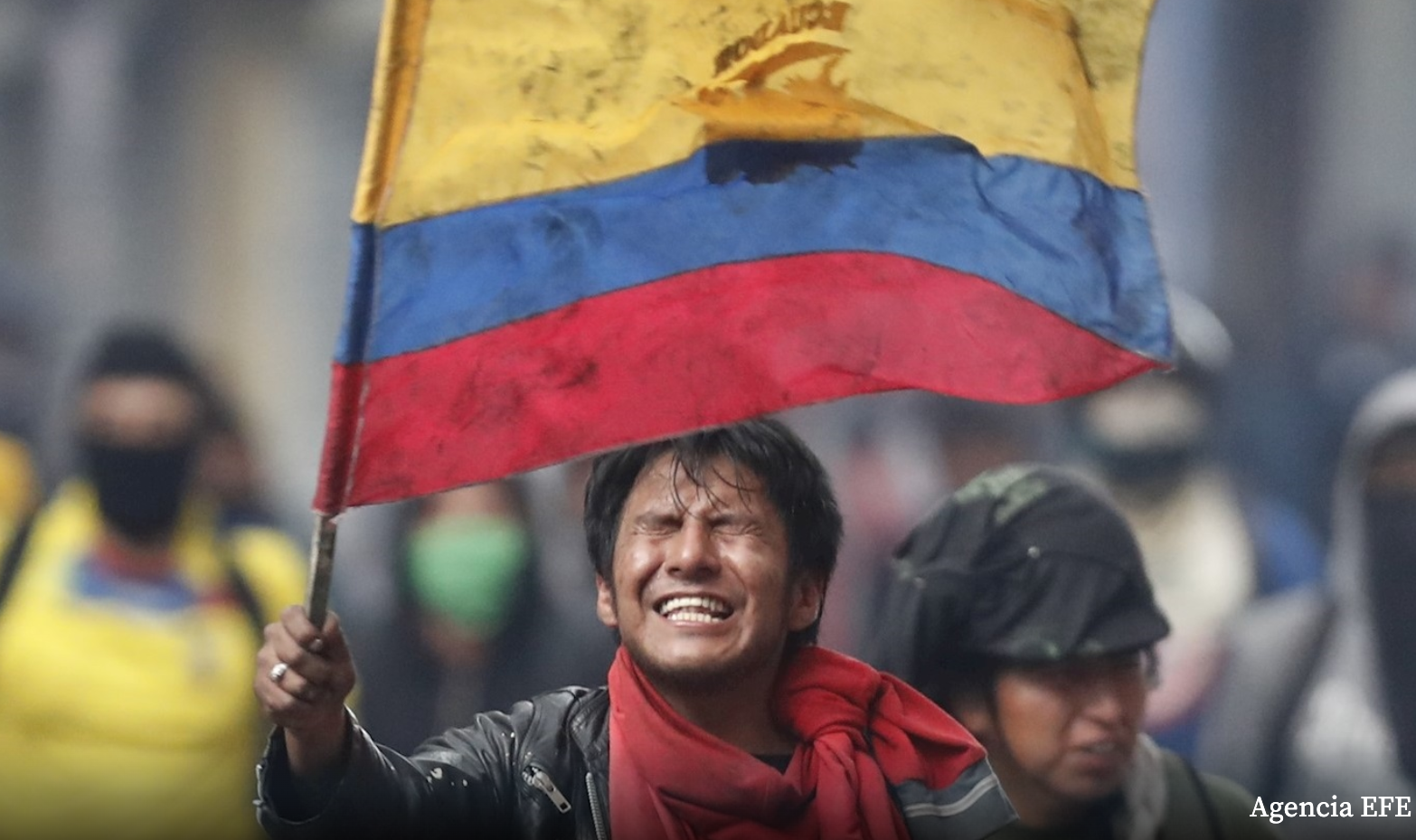The nightmare that kept Ecuadorian President Guillermo Lasso awake at night materialized a few days after the evaluations of the first year of his administration. The risk of a new popular outburst, similar to that of October 2019, seemed low because the government thought that the fuel price hike had gone unnoticed during the pandemic years. But on Wednesday (June 22) Leonidas Iza Salazar, the president of the Confederation of Indigenous Nationalities of Ecuador (CONAIE), serenely repeated after reciting Our Father at the foot of the grounds of the Central University in Quito that “we came for 10 points [of the strike platform] and we will leave with the 10 points.” In this way, the popular mobilization has been slowly turning into an authentic popular rebellion.
Initially, the response to the call for a strike by the Confederation of Indigenous Nationalities of Ecuador (CONAIE) on June 13, joined by other indigenous and rural organizations such as the Organization of Evangelical Indigenous People in Ecuador (FEINE) and the National Federation of Peasant, Indigenous and Black Organizations of Ecuador (Fenocin), seemed weak.
This was due to the fact that there was no previous agreement to call a joint strike since the organizations of the Popular Front, with strong student and teachers’ union roots, had called for a separate mobilization for June 16. Meanwhile, the United Workers Front, for its part, the main grouping of the weakened workers’ unions, had called a national mobilization for June 22.
Faced with this lack of coordination, the government believed it could deal a death blow to the mobilization, and in the early morning of June 14, the police arrested in the province of Cotopaxi, south of Quito, the indigenous leader Leonidas Iza Salazar. No government had attempted a similar action since the birth of CONAIE in 1986. Only Rafael Correa had imprisoned on four occasions the indigenous leader of the regional mountain organization ECUARUNARI, but never the president of CONAIE. And no one had ever done so in the middle of a national strike.
Since then, the popular participation and the geographical distribution of the mobilization have not stopped growing with increasingly angry masses. A day before the arrest of leader Leonidas Iza, roadblocks had been reported in six provinces. However, the following day the blockades were extended to 12 provinces. At midnight of the same June 14, Iza was released, yet, the following day the roadblocks were extended to 15 provinces. By Monday, June 20, 93 road closures were reported in 22 provinces.
Urban mobilization has been increasing as rural mobilization has grown. When on Tuesday 22nd the indigenous people entered Quito from the south and north of the city, the strike had already acquired the proportions of an authentic popular rebellion and did not seem to stop.
How to explain the governmental blindness and the power of the popular rebellion?
The background is undoubtedly the desperation of the impoverished majority of the country. This government, made up of businessmen and white-mestizo elites living in exclusive neighborhoods and basically socializing among privileged groups, has not reacted to the popular frustration after two years of the economic and social catastrophe caused by the pandemic.
The rise in fuel prices is for the popular sectors a tangible factor of exclusive governmental responsibility that directly affects inflation, generating serious consequences on people’s incomes.
In fact, the indigenous and popular uprising of October 2019, which is the direct antecedent of this new strike, was precisely due to the brutal rise in the price of diesel (also called gasoil) that went in a short time from costing one dollar per gallon to 2.30 dollars. Diesel in Ecuador is used for public transport and heavy goods transport.
But orthodox economists and government officials, focused and blinded by the fiscal impact of the cost of fuel, forget its effect on inflation, the increase in the cost of national production, the loss of competitiveness of exports of a dollarized country, and on the increase in imports which become cheaper.
Therefore, the first and undoubtedly the most important demand of this popular rebellion is precisely the one that the government refuses to consider: the reduction of fuel prices. Not its freezing, which the government already did (although slipping to a higher rise) before another uprising in October 2021, but the reduction of its price.
But as in October 2019, when the government was claiming that the country would collapse if it gave up $1.5 billion of such revenues (in a country with a State budget of $30 billion), now it is claiming an even greater disaster if between $500 and $600 million are no longer earned, with oil that the country exports at $100 per barrel. The fiscal economic orthodoxy lacks rational explanations.
In conclusion, of the ten demands of the strike, the fuel price reduction is the only one that could calm the spirits of the impoverished people indignant with an indolent government. But unfortunately, only a popular rebellion of colossal magnitude such as the one currently keeping the government cornered can make it open its eyes to the social crisis.
Translated from Spanish by Janaína Ruviaro da Silva













